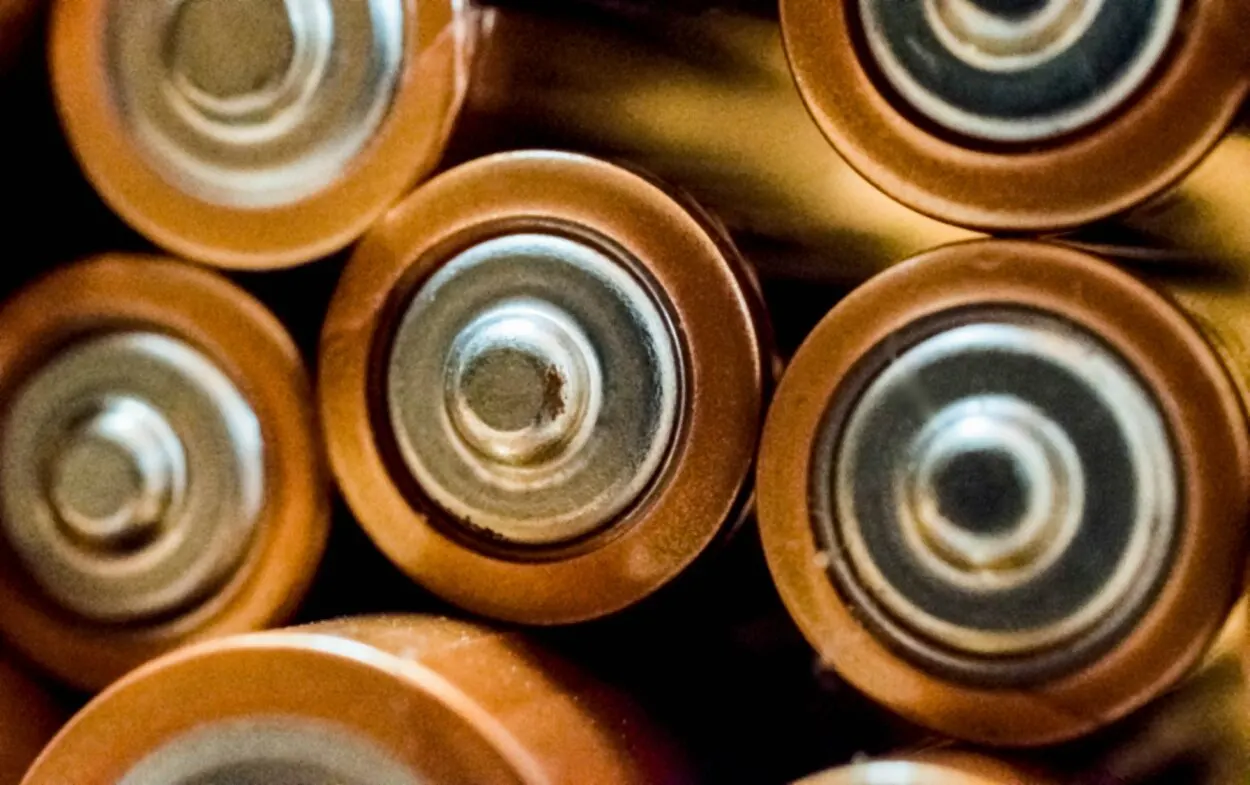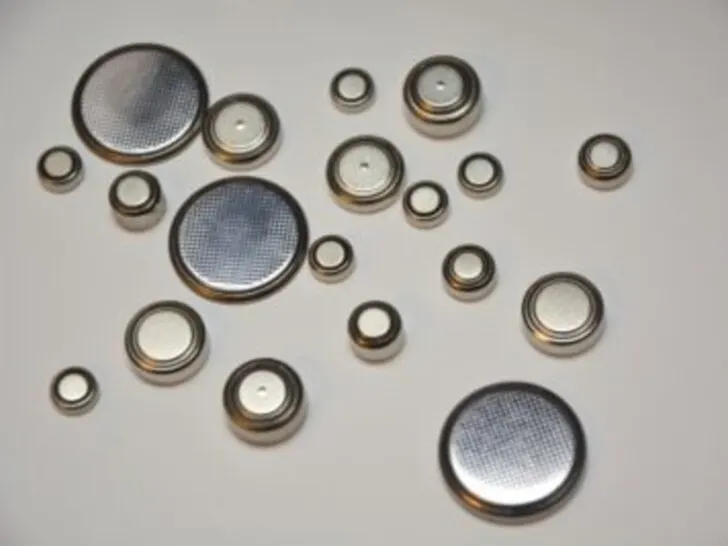Batteries are important parts of our lives due to their presence in our favorite objects. A child’s toy might have a small battery, but a phone would have a bigger one. Depending upon the size and capacity, batteries are placed in an object.
CR2016 and CR2032 are coin-style miniature lithium manganese dioxide batteries that can be used in devices such as smoke detectors, watches, laptops, and calculators.
Although the CR2032 battery and CR2016 battery have similarities, there vary in battery thickness and capacity. CR2032 is thicker with 3.2mm and a high capacity, compared to CR2016’s 1.6mm thickness and fairly low capacity.
Keep reading to know more about CR2016 and CR2032 batteries, along with their functions and individuality.
What Is A Battery?
A battery is a collection of one or more cells that produce a flow of electrons in an electrical circuit through a chemical reaction. Batteries have three basic components: an anode, a cathode, and some electrolytes.
When charged, the anode and cathode engage in a reaction that transfers electrons back through the circuit to the cathode, where a different chemical process occurs.
When the positive or negative electrode material is exhausted or no longer available for reaction, the battery can no longer produce electricity.
You probably know best about disposable alkaline batteries. NASA spacecraft typically use rechargeable nickel-cadmium or nickel-metal hydride batteries like those found in laptops and mobile phones.
Different Types Of Battery

Different battery sizes improve the overall efficiency of your gear, and it’s important to understand why.
In general, the larger the battery, the greater its capacity to store energy. Large and small batteries are both rated at 1.5 V, but larger batteries store more energy and extend battery life.
Let’s look at the different types of batteries and their capacity, function, and volt.
| Types of Batteries | Volt | Function |
| AA | 1.5 | These batteries are used in everything from thermometers and pagers to cordless phones. |
| Lithium | 3.7 | It has the highest energy density of any battery cell and can store more energy than any other battery. |
| Carbon Zinc | 1.4-1.7 | It has a very low energy density. Often these batteries cannot provide enough power for high-drain devices. |
| Alkaline | 1.5 | It is economical, easy to dispose of, and very popular. Best for moderate to heavy-use devices. |
| Silver Oxide | 1.6 | Due to its small size, it is widely used in watches and other small devices. |
| 12V | 12 | This large, block-heavy battery delivers hundreds of amperes of current and is commonly used in automobiles and other industrial equipment. |
| Lithium-Ion | 3.7 | A type of rechargeable battery that can be recharged many times. They require no regular maintenance and offer very high energy densities. |
Importance Of A Battery
Batteries have become an integral part of human existence and have proven so important that they are involved in multiple activities.
Its uses range from transportation uses to telecoms, consumer electronics, wearable devices, and gadgets. They enable comfortable living and are essential to the progress of humanity in general.
The availability of batteries has become an integral part of modern life. They are necessary to power the vast amount of electronics used in the modern world.
Batteries are also part of a huge multi-billion dollar industry. In the United States alone, over $10 billion is spent on batteries each year.
What Are CR Cells?

For CR batteries, the first letter indicates the chemical composition and the second letter R stands for cylindrical or circular.
Due to the lithium and manganese dioxide chemistry, the battery takes a long time to discharge at low load discharges. So they have a 10-year shelf life but are not rechargeable.
This Lithium Manganese Dioxide (CR) button cell is a small and lightweight battery that has a wide temperature range and an operating voltage of 3V.
They have excellent impulse capability, provide stable voltage levels during discharge, long-term reliability, and a temperature range of -30°C to +85°C.
What Is A CR2016?
CR2016 is a useful battery in many small electronic devices.
It works as a watch replacement for many brands and provides ample power for calculators, PDA devices, medical devices, toys, and more.
With a long shelf life of up to 10 years, this battery is an economical choice to stock up on so you never run out of batteries.
These CR2016 batteries provide constant voltage and are temperature resistant even under the most extreme temperature changes.
It works perfectly as a battery replacement of the same size and performs more than you can imagine.
What Is A CR2032?
CR2032 is also known as a lithium energizer. It is a coin cell battery mainly used in high-power devices such as hearing aids, blood glucose meters, and car keyless entry transmitters.
The first two digits represent the diameter and the second digit represents the height or thickness in tenths of a millimeter.
It provides durability to the device in which it is built, allowing them to cover it and form a sturdy cylinder.
It can withstand temperatures from minus 22 degrees Fahrenheit to 140 degrees Fahrenheit and can absorb enough bundles of energy to keep it charged for almost eight years.
What’s The Difference Between CR2032 And CR2016 Batteries?
These two batteries are commonly called button cells or coin cells but they don’t have the same identification number.
The diameter of CR2016 and CR2032 batteries is the same at 20mm. Moreover, it generates 3 volts.
They are primarily used to power consumer devices such as watches, timers, keychains, and computers. The reason they are so common is that they are generally cheap and durable.
The difference between them is that CR2016 is thinner than CR2032. The thickness of the CR2016 battery is 1.6mm and the thickness of the CR2032 battery is 2.0mm.
The typical CR2016 battery has a 90 mAh capacity. This means that this battery will last about 6 hours when used with a 15mA load.
For the CR2032 battery, the capacity is about 240mAh. This means that this battery can last about 10 hours when used with a 24mA load.
The table below accurately summarizes the key differences between a CR2016 and CR2032 battery.
| Specifications | CR2032 | CR2016 |
|---|---|---|
| Thickness | 3.2 mm | 1.6 mm |
| Capacity | 240 mAH | 90 mAH |
| Run-time | Up to 10 hours | Up to 6 hours |
| Power output | High | Comparatively lower |
Dangers Of CR Batteries
CR2032 batteries and other button-sized lithium batteries are large enough to swallow.
Worse, they are shiny and often appeal to children. The acid may leak out and create small holes in the stomach and intestinal cavities.
Chromium batteries are designed to carry large currents, so they heat up quickly when shorted. Do not stack CR2032 batteries on top of each other or place them near metal that can cause a short circuit. In the worst case, the battery will explode.
Preschool crawling babies are especially at risk when they explore the world with their mouths full. Toddlers are naturally curious to explore and get involved with the risks of CR batteries.
Alternatives To CR Batteries
CR123A

They are packed with energy and this battery is commonly used in tactical gear, wireless security, and home automation.
A CR123A battery is considerably shorter than an AA battery but produces 3 volts, twice as much as an AA battery.
These batteries can deliver enormous amounts of energy despite their small size and are great for devices that need a lot of power. B. LED flashlight, and ensure maximum performance
NiCd

Nickel-cadmium batteries, sometimes known as NiCd batteries, are frequently used in toys, digital cameras, and other high-drain gadgets like torches.
Standard sizes such as AA, AAA, C, and 9V are available. NiCd batteries are compared with other batteries, among others. Alkaline batteries are unique in that they maintain a constant voltage until the battery dies.
At 1.2V per cell, the voltage isn’t high, but the power supply makes up for it, and the brightness remains constant until the battery dies.
Conclusion
- Both CR2016 and CR2032 share the same 20mm diameter. The main difference between them is in their thickness; the thickness of the CR2016 battery is 1.6mm and the thickness of the CR2032 battery is 2.0mm.
- Both batteries can produce 3 volts. However, it cannot be exchanged because the thickness is different. Also, you cannot stack two CR2016s to replace a CR2032. Doing this will generate 6 volts which are devastating for the device you are using.
- The battery is also small, round, and light, making it easy to swallow. It does not contain mercury, but the lithium it does contain can be dangerous. Therefore, it should be kept out of reach of children.

